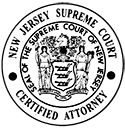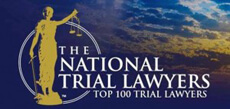5.20B LIABILITY FOR DEFECTS IN PUBLIC STREETS AND SIDEWALKS
A. Liability of Municipality
B. Liability of Abutting Owner or Occupant
1. In General
a. As to Construction or Other Activity
The owner of residential premises abutting a public sidewalk is not responsible for defects therein caused by the action of the elements or by the wear and tear incident to public use. If, however, you find that the defective condition of the sidewalk was the result of the negligent construction thereof by the owner or that it resulted from an activity, commercial or otherwise, which was carried on by him/her, the plaintiff may recover for the injuries proximately resulting from such defective condition.
b. As to Repairs
A residential property owner owes no duty to the public to repair a sidewalk which is in a state of disrepair by reason of normal wear and tear or by reason of the elements such as rain, snow, frost, and the like. Nor is mere failure fully to correct the old condition a sufficient basis for liability.
Where, however, the owner attempts to make repairs to correct some defect therein for which he/she is not responsible, he/she becomes responsible if he/she makes the repairs negligently and thereby causes the sidewalk, after the repairs, to be more dangerous than before or if he/she causes a new hazard, different from the old.
2. Snow and Ice
a. Liability of Owner Who Undertakes to Clear Sidewalk
The owner of residential premises abutting a public sidewalk is not required to keep the sidewalk free from the natural accumulation of ice and snow. But he/she is liable if, in clearing the sidewalk of ice and snow, he/she, through his/her negligence, adds a new element of danger or hazard, other than that caused by the natural elements, to the use of the sidewalk by a pedestrian. In other words, while an abutting owner is under no duty to clear his sidewalk of ice and snow, he/she may become liable where he/she undertakes to clear the sidewalk and does so in a manner which creates a new element of danger which increases the natural hazard already there.
Therefore, should you find that the defendant, in undertaking to remove the ice and snow from his/her sidewalk, created a new hazard or increased the existing hazard and that this new or increased hazard proximately caused or concurred with the natural hazard to cause plaintiff’s injuries, then you must find for the plaintiff.
Should you find, however, that the defendant did not increase the natural hazard or create a new element of danger which proximately caused or concurred in causing plaintiff’s injuries, you must find for the defendant.
b. Liability of Owner of Commercial Property for Defects, Snow and Ice Accumulation and Other Dangerous Conditions in Abutting Sidewalks
The law imposes upon the owner of commercial or business property the duty to use reasonable care to see to it that the sidewalks abutting the property are reasonably safe for members of the public who are using them. In other words, the law says that the owner of commercial property must exercise reasonable care to see to it that the condition of the abutting sidewalk is reasonably safe and does not subject pedestrians to an unreasonable risk of harm. The concept of reasonable care requires the owner of commercial property to take action with regard to conditions within a reasonable period of time after the owner becomes aware of the dangerous condition or, in the exercise of reasonable care, should have become aware of it. If, therefore, you find that there was a condition of this sidewalk that was dangerous in that it created an unreasonable risk of harm for pedestrians, and if you find that the owner knew of that condition or should have known of it but failed to take such reasonable action to correct or remedy the situation within a reasonable period of time thereafter as a reasonably prudent commercial or business owner would have done under the circumstances, then the owner is negligent.
What actions must the owner of commercial property take with regard to defects/snow/ice accumulation/dangerous conditions? The action required by the law is action which a reasonably prudent person would take or should have taken in the circumstances present to correct the defect/snow/ice accumulation/ dangerous condition, to repair it/remove it or to take other actions to minimize the danger to pedestrians (for example, to give warning of it) within a reasonable period of time after notice thereof. The test is: did the commercial property owner take the action that a reasonably prudent person who knows or should have known of the condition would have taken in that circumstance? If he/she did, he/she is not negligent. If he/she did not, he/she is negligent.
3. Nuisance, Sidewalk
A street and every part of it is so far dedicated to the public that any act or obstruction which unnecessarily incommodes or impedes its lawful use is a nuisance.
One who constructs a drain, grating or a coal hole or similar structure in the sidewalk does it subject to the right of safe passage of the public over and along every part of the sidewalk. In making such use of the sidewalk, he/she is required to do so by a method of construction which does not create a nuisance and, having done so, is under a further duty of exercising reasonable care to keep the structure safe for the use of the public.
4. Adoption of Nuisance by Subsequent Owner
Where, through the action of a prior owner of premises abutting a public sidewalk, a condition amounting to a nuisance has been created, one who takes title from the original creator of the condition and continues to maintain it may be held liable in damages to a user of the sidewalk who suffers injury by reason of such condition.



